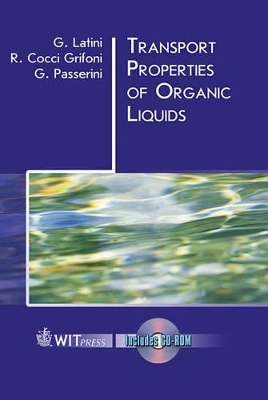
Transport Properties of Organic Liquids
WIT Press
978-1-84564-053-8 (ISBN)
The liquid state is possibly the most difficult and intriguing state of matter to model. Organic liquids are required, mainly as working fluids, in almost all industrial activities and in most appliances (e.g. in air conditioning). Transport properties (namely dynamic viscosity and thermal conductivity) are possibly the most important properties for the design of devices and appliances. The aim of this book is to present both theoretical approaches and the latest experimental advances on the issue, and to merge them into a wider approach. It concentrates on applicability of models. This book is organized into five chapters plus a data collection. The chapters discuss the following topics: the liquid state and some well-know theories able to explain the behaviour of liquids; a rather complete review of models, based on theoretical assumptions and/or upon physical paradigms, to evaluate heat transfer in organic liquids; a review of several well-known semi-empirical methods to predict the thermal conductivity coefficient of organic liquids in their saturated liquid or slightly sub-cooled state as a function of the temperature; momentum transfer on the dynamic viscosity coefficient.The data collection contains most of the experimental points available in literature concerning thermal conductivity and dynamic viscosity of organic liquids.
Chapter 1: Introduction to the liquid state and the transport properties of liquids Classical microscopic states or microstates and ensembles; Ideal gases, real gases and 'gas-like' models; Crystalline solids and 'solid-like' models; Dense fluids and intermolecular forces; Introduction to non-equilibrium statistical mechanics; Molecular theory of corresponding states; Group contribution methods; Lennard-Jones and Devonshire theory of the liquid state; McLaughlin and Horrocks theories of the liquid state Chapter 2: Physical approach to the evaluation of liquid thermal conductivity Heat transfer; Physical models based on the use of the potential functions; Physical models based on the use of non-equilibrium statistical mechanics; Other theoretical models Chapter 3: Estimation methods for thermal conductivity of liquids The prediction method of Weber and derived methods; Methods based on the sound speed; Methods based on the work of Pachaiyappan, Ibrahim and Kuloor; Other prediction formulae; Outlines about prediction formulae for thermal conductivity of mixtures; The method of Latini et al Chapter 4: Physical approach to the evaluation of the dynamic viscosity of liquids Applications of statistical mechanics for the evaluation of the dynamic viscosity of liquids; Applications of the activated state theory for the evaluation of the dynamic viscosity of liquids; Applications of the free volume theory for the evaluation of the dynamic viscosity of liquids; Applications of the combined free volume and activated state theories Chapter 5: Estimation methods for the dynamic viscosity of liquids The residual viscosity; Empirical equations to evaluate the dynamic viscosity of liquids; Prediction methods based on group contribution; Equations based on the works of Batschinski; Outlines on the prediction of the dynamic viscosity coefficient of mixtures; Second Latini equation
| Erscheint lt. Verlag | 5.5.2006 |
|---|---|
| Reihe/Serie | Advances in Fluid Mechanics S. ; No. 46 |
| Zusatzinfo | Illustrations |
| Verlagsort | Southampton |
| Sprache | englisch |
| Themenwelt | Naturwissenschaften ► Physik / Astronomie ► Strömungsmechanik |
| ISBN-10 | 1-84564-053-5 / 1845640535 |
| ISBN-13 | 978-1-84564-053-8 / 9781845640538 |
| Zustand | Neuware |
| Haben Sie eine Frage zum Produkt? |